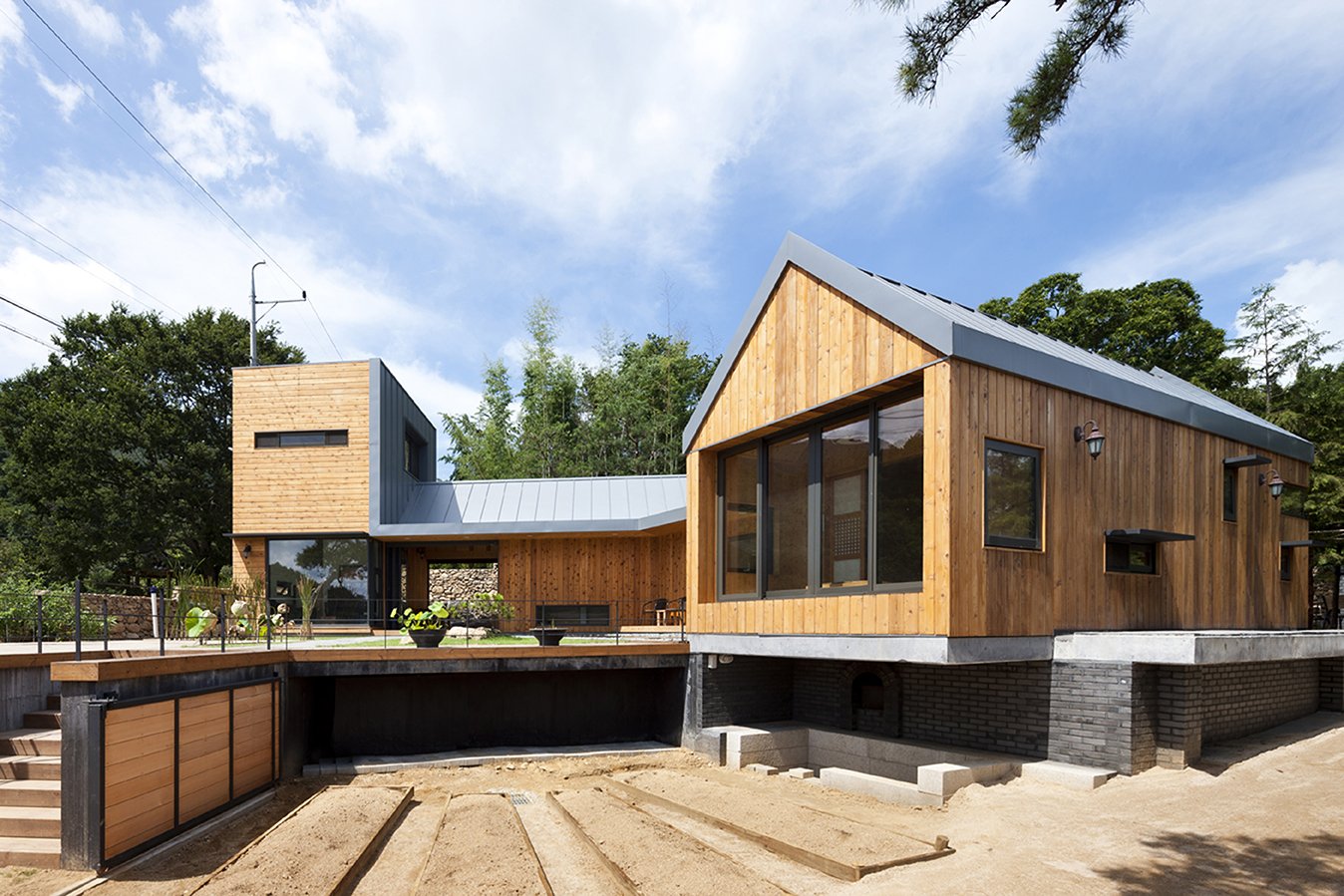#9501. Modern countryside house with wooden facade and dual-volume composition
This architectural object represents a modern countryside house with an expressive wooden facade. The project is interesting in its compositional solution: it consists of two main volumes connected by a transition section, creating a dynamic spatial composition. The main volume has a traditional gabled roof, which references the archetypal house form, yet the execution is completely contemporary.
The facade is clad with vertical wooden panels of a warm hue, giving the building an organic quality and connecting it to the surrounding natural landscape. The contrast between the wooden cladding and the gray metal roofing creates visual lightness and emphasizes the modernity of the composition. The architect skillfully uses large glazed surfaces that break up the wooden texture and provide a visual connection between interior and exterior spaces.
The second volume of the house has a more cubic form and is also clad in wood, but organized in a more compact volume. The basement level is made of dark brick, creating the sensation that the wooden volume is floating above the ground. This technique adds lightness to the entire composition. The terrace platform between the volumes organizes a transitional zone and serves as additional open space.
When designing your own facade, you can adopt several techniques from this project: combining natural materials (wood) with modern ones (metal, glass); using vertical articulation of the facade to add dynamism; contrasting roof emphasis; organizing multi-level volumes to create an interesting composition; and using a basement level made of different material to visually "lighten" the main volume of the building.
